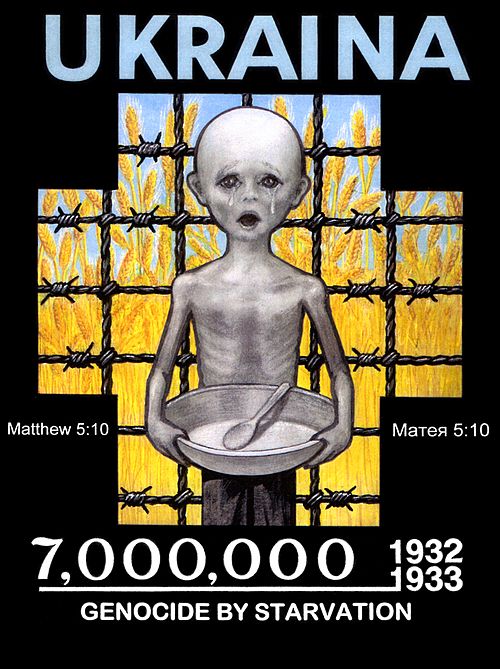
The genocide perpetrated by the Union of Soviet Socialist Republics (USSR) in Ukraine between 1932 and 1933, also known as the Holodomor (from Ukrainian: Голодомор, literally "extermination by hunger"), remains one of the darkest chapters in Ukrainian and global history. This tragedy was characterized by an artificially induced famine orchestrated by the Soviet regime, resulting in the deaths of millions of people, primarily Ukrainians.
In the 1920s and 1930s, the USSR pursued a policy of forced collectivization of agriculture as part of its socio-economic transformation towards socialism. This policy aimed to eliminate private land ownership and collectivize agricultural production under state control. Ukraine, known as the "breadbasket of the Soviet Union," was particularly targeted due to its high grain production.
Outbreak of Famine
In 1932, Soviet authorities, led by Joseph Stalin, implemented brutal economic policies aimed at forcing Ukrainian peasants to join collective farms. These policies included the forced requisition of crops and livestock, as well as unattainable production quotas imposed on peasants. Farmers who resisted these measures were severely repressed, with their lands confiscated, and often deported or executed.
The Famine
As a result of these policies, a widespread famine broke out in Ukraine in 1932-1933. Peasants were deprived of their means of subsistence, unable to feed their families. Reports from the time document cases of cannibalism as desperate people sought to survive. Despite the rampant famine, Stalin and Soviet authorities refused to acknowledge the crisis, rejecting any international aid and prohibiting Ukrainians from leaving the region to find food elsewhere.
International Reaction
The international community, while aware of the suffering in Ukraine, largely remained silent in the face of the deliberate famine orchestrated by the USSR. Some countries such as the United States and the United Kingdom sent humanitarian aid, but it was often blocked by the Soviet government or insufficient to address the scale of the crisis.
Human Toll
The exact human toll of the Holodomor remains debated due to censorship and Soviet propaganda of the time. However, it is estimated that several million people perished in Ukraine during this period, making the Holodomor one of the largest genocides in history.
Recognition and Commemoration
Following the dissolution of the USSR in 1991, Ukraine as well as many other countries officially recognized the Holodomor as an act of genocide perpetrated by the Soviet regime. Memorials have been erected in Ukraine and around the world to commemorate the victims of this tragedy.
Conclusion
The Ukrainian Genocide of 1932-1933 stands as a poignant testament to the horrors of totalitarianism and the devastating consequences of government policies on vulnerable populations. The Holodomor remains a crucial reminder of the need to uphold human rights and resist oppression wherever it manifests in the world.
Pkravchenko, FAL, https://fr.wikipedia.org/wiki/Holodomor#/media/Fichier:Holomor_Art_Denysenko_1.jpg


0 comments: